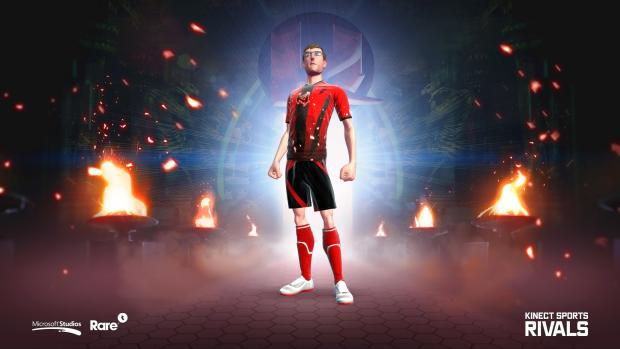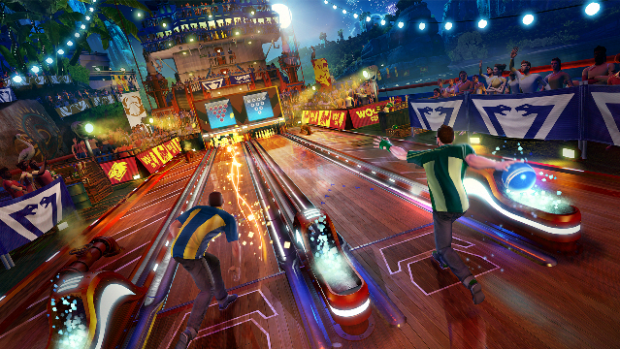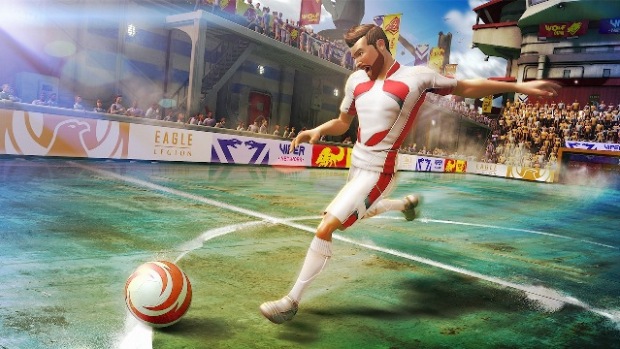When the original Kinect was released on the Xbox 360, Kinect Sports was its own Wii Sports: a showcase for the power of Kinect, which was easy to pick up and play but lacked any real depth. It may not have been aimed at the serious gamer, but its two games became the most popular available for the new piece of hardware. When it was revealed that Microsoft’s new Xbox One console would be coming with Kinect 2.0 in every box, it came as no surprise that a new Kinect Sports game would be released alongside it.
Fast-forward, and over four months past the launch of Xbox One, Kinect Sports is only now in the starting blocks. The title that should have shown gamers around the world what the new Kinect is capable of suffered a couple of major delays, and it sadly left Microsoft with only one real Kinect title at launch – Fighter Within – which was definitely not the best first for the upgraded new tech.

Right away, it seems that Rare are taking things more seriously this time, as Xbox Avatars are eschewed in favour of Kinect Sports Champions – created by a Kinect full face and body scan. These result in a slight caricature of yourself (see the above image for mine) – albeit perhaps a little more athletic. The results won’t exactly blow you away, but do create a closer approximation to the real you than most avatar creators can manage, while still allowing you to edit hairstyles, accessories and facial hair. Once created, this will be your in-game character across all modes, and four Champions can be logged into the game at any one time (although most sports only allow for two players at once, aside from Bowling where you each take turns).
Another major difference is that rather than being focused on individual events and party play, there is a story mode of sorts in Rivals. This kicks off right away, and you have to play through the first six chapters (which each act as a tutorial to the six sports) in order to unlock the events for play in any other modes. A story mode is obviously a boon for solo gamers, and undoubtedly adds to the lifespan of the game, even if the story is as shallow as a puddle. The real issue arises from the fact that a lot of Kinect Sports fans will want to get straight into the game and play against their friends and family but won’t be able to without completing these first chapters, which easily takes more than an hour.
The tutorials do, however, give you a pretty good idea of how to play each sport. It is slightly irritating that cutscenes cannot be skipped though, so be warned that if you fail a tutorial you will have to watch the same cutscenes over and over. Thankfully, your opponents early on in the game aren’t challenging, and it is only getting the hang of how to control each event that could lead to you failing a challenge. The sports are a mixed bag really, and we are treated to refined versions of three returning Kinect Sports events and three completely new ones.

Bowling was never likely to be a revelation in any way, and clearly little work was necessary to adapt it for Kinect 2.0. It remains possibly the closest event to playing the real sport, as the direction you aim, your starting position in the alley and any spin you put on the ball are all taken into account, and rather than having to perform any additional gestures, they are all picked up through your natural bowling motion. Now that Kinect can see a subtle twist in your wrist, it can accurately add spin without the need for exaggerated arm waving after the ball has been released.
Wake-racing has been available as Kinect Sports pre-season for some time, and this is one of the most accurate one-to-one control events, even if the actual actions are fairly sedate. It is the only sport that can be played either standing or sitting down, and the steering feels very natural. Leaning into corners to make tighter turns and pulling back on your invisible handlebars to make a jump are both very intuitive and the event is very easy to pick up, yet there is some real depth in power ups and tactics in order to master it. It is probably the most solid event, with very few Kinect anomalies – it is just a shame that an online multiplayer mode wasn’t included to make the races a little more exciting.
Tennis is again a returning sport, but very little has changed since the last outing. The main addition are subtleties in the motion gestures, with Kinect now being able to read the angle at which you strike the ball – allowing for topspin, backspin and lobs, for example. In practice though, perhaps the realism is now a little too great as the timing window to make shots seems incredibly short. On top of that, swing too hard and Kinect seems to lose track of your arms, so you must be careful to use more controlled swings. Because of these issues you won’t get many long rallies going, and the event frustrates more often than it successfully hits the mark.

Soccer is the most disappointing event though. Rare decided to focus on “drama moments” instead of full attacking and defending, and this has turned the event into something more like a shooting gallery, with wooden defenders moving side to side automatically. You can no longer jockey for position and players won’t be tackled for taking too long on the ball, you just simply pass and shoot – or make saves if you are the defending team. It is Americanised somewhat by the addition of a shot clock, but this doesn’t help the game in any way; it just means everything feels rushed. There is no real freedom in the event anymore and it suffers as a result.
The target Shooting seems very shallow on the surface, but can actually get pretty competitive. It couldn’t be simpler, as you only need to point your finger to shoot targets, but it is the different target modes, the opportunities to steal your enemies targets and to fire back at them directly which make the mode quite compelling. With the controls being so simple, it is easy to pick up for gamers of all skills, but requires quick reactions and a little bit of strategy in order to master it. In local multiplayer, the mode is very successful and is the surprising winner out of the the six sports.
The final (and most unique) sport is rock climbing. Players have to reach upward, using momentum to pull themselves up the wall, and strategically choose the best hand-holds in order to make good progress. You can even grab your enemies and tug them down off the wall. Climbing is the most complex event and takes longer to master than all of the others, but it is probably one event you will keep coming back to as it is something different to what we have seen before. It is entirely fresh, and despite it being hard to get the hang of navigating the walls, it is probably the most rewarding when you get it right.

Where the title misses a few steps is in its implementation of multiplayer. The Kinect Sports Hub is being pushed hard, as it encourages social media interaction, video sharing and online Rivals challenges/Leaderboards. This works like many racing games where you face “ghosts” of your rivals who have challenged you, rather than playing live online. This ties in well with the DVR capabilities of Xbox One, and you can rank up to enter higher leagues by levelling up after events, but it seems to lack the excitement of playing against a competitor who is actually taking part at the same time as you, or – better yet – standing next to you.
In fact, the local play modes have been cut back severely, resulting in the game appearing to be aimed largely at solo gamers. The first two Kinect Sports titles often came out at parties in my house, and the roulette-style party mode allowed large teams of players to take turns at a mixture of full events and mini-games. For Rivals however, there is no party mode at all, and all of the sports are serious one-on-one style affairs – no silly mini games or training drills are included at all. The title comes off as much more po-faced, and much of the simple joy is removed. Having two friends standing side by side, heading pineapples into an empty net, is often a lot more fun than a serious game of football – which is something that Rare seems to have forgotten.
VERDICT: The controls and detection afforded by the new hardware undoubtedly makes Kinect Sports Rivals a much more technically-accomplished title, with fewer of the niggly irritations gamers almost expect from a motion control game. The events generally work (tennis aside) but, sadly, functionality isn’t the basis for an enjoyable game. The emphasis on the story mode and online sharing loses the simple magic of local multiplayer and the silliness of party play. Yes, party games can be a bit grating, but Kinect Sports always managed a good mix where you could play seriously or play for laughs. Rivals does not have this same variety and, while it controls well, there is a definite loss of personality.

DECENT. A 6/10 indicates that, while this game could be much better, it still has a fair amount to offer the player. It might be an interesting title sabotaged by its own ambition, or a game denied greater praise by some questionable design choices. Don’t avoid it outright, but approach it with caution.
Review code provided by publisher.







